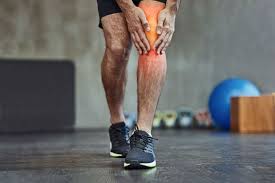There is nothing more depressing to an athlete than an injury that sidelines them. If they are pro players, then there are trainers and often team doctors or nurses on staff, but not always. With that said, the one thing they know is that until they are released to begin working out again, they are to abstain from any activity forbidden them. This includes running, weightlifting, core training and any other kind of fitness regimen to get them buff again. On this, let’s follow their lead.
1. Act Naturally
Whereas so many athletes try to bend the rules and take anabolic steroids, pros know that they can be banned from their sport if caught using steroids. However, nature has an answer to that in a compound called Turkesterone. It acts like an anabolic steroid without actually being a steroid and there are no known side effects discovered to date. In this Turkesterone.com guide you will learn that it is actually an ecdysteroid typically found in insects and plants. It is not an anabolic steroid although it tends to act like one. If you want to build lean muscle mass while working off some of those fat cells that collected during your time of inactivity, this is one safe natural supplement to try.
2. What You Should Know About Pain
You have probably lived by the misguided golden rule, “No pain – no gain.” Unfortunately, when it comes to an injury, that is the body’s way of telling you that something isn’t right. Don’t try to work through the pain unless a doctor tells you to do so and gives you specific instructions on how to work those tender spots. If you are not ready to begin working out, your body will be the first to tell you!
3. Work Other Parts of the Body
Depending on where you have been injured, it may be okay to work other parts of the body. For example, if you broke an ankle or sprained your Achilles heel, lifting weights from a seated position or bench pressing might be approved. Conversely, if you’ve injured a rotator cuff in your shoulder, then walking or running may be suitable to burn calories, build muscles and get oxygen pumping through your body with that cardio workout. Here again, remember that ill-advised old adage about pain and gain. You will know the difference between normal pain that comes along with working out and pain that is the result of an injury you are at risk of reinjuring at the very least.
4. Stay Hydrated
There is nothing quite as effective as drinking plenty of water to wash toxins away from injuries and sore muscles. It would be wise to drink spring or distilled water because there are no harmful chemicals in it, but if it isn’t available, a Brita filter works just fine. They are available for cups, mugs and even one- or two-gallon dispensers, so there is no need to drink tap water once you have a filtration system.
5. Watch Your Diet
One other thing you should be aware of when getting fit post-injury is that you’ve probably gained a few pounds due to inactivity. Throughout the duration in which you are unable to work out as strenuously as before, watch your calories. Talk to your trainer or team doctor to see what kind of maintenance plan you should be on until you can start burning those calories once again.
Don’t forget to get plenty of rest as well. The body heals during periods of rest so that is one of the best things you can do to promote healing in any injury. Take your time and don’t push it. Do as the doctor orders and you’ll be fit and buff in no time at all.





Be First to Comment